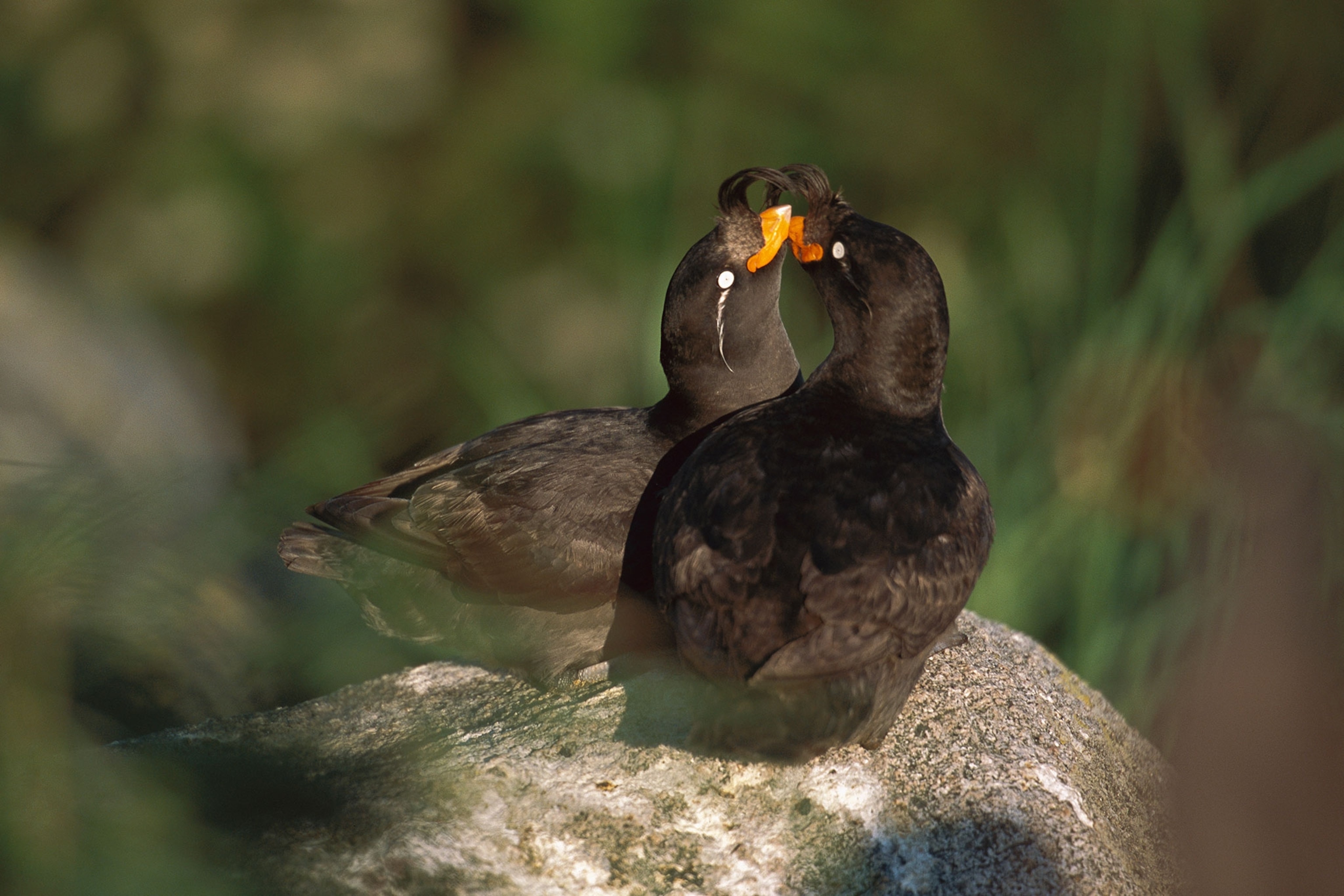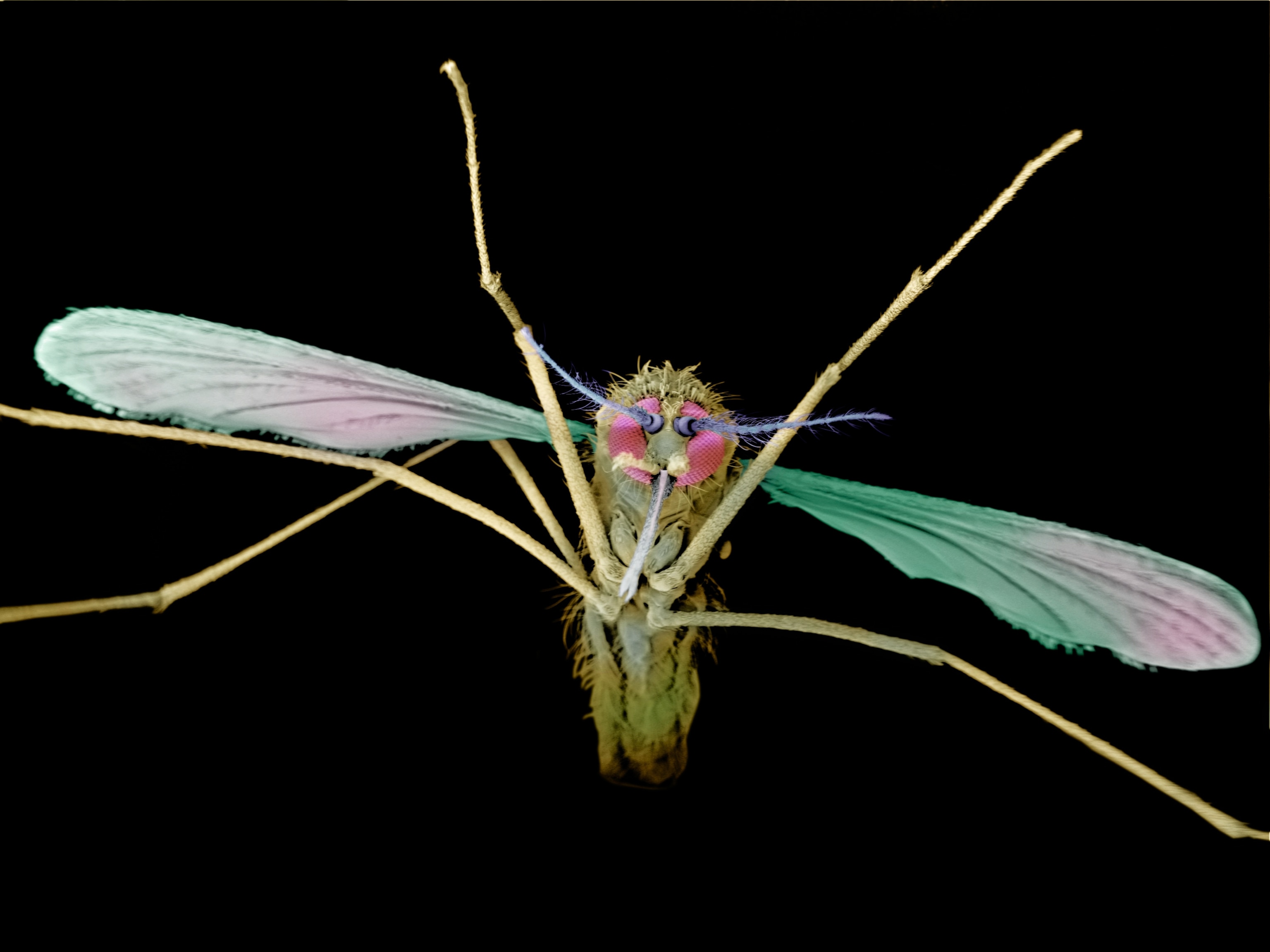
These Birds Make Their Own Citrus-Scented Cologne
The sexiest male crested auklets have large head feathers and a strong tangerine smell, a new study finds.
On Alaska's rugged Shumagin Islands, no fruit tree dares take root, yet the smell of fresh lemons and tangerines hangs heavy in the air.
A nearby colony of lovesick crested auklets are the culprits: Males produce a citrus odor to attract females. And as new research in Behavioral Ecology reveals, it's the strength of their citrusy scent along with the size of their crests that really matters.
Researchers have long known that male auklets with larger crests—a tuft of head feathers that curl forward—have more sexual appeal. But unlike an elaborate display or vocalization, these ornaments cost little energy to produce, making them an unreliable signal of fitness to females looking for a robust male.
Scientists assumed there must be something else that makes these longer-crested individuals so attractive. (Read about "moonwalking" birds and other crazy avian courtships.)
Perhaps it’s their smell, thought study leader Hector Douglas, an independent marine biologist. “The citrus odor is incredibly intense,” he says. “They’re the strongest smelling birds I know of.”
But in 2002, when he began his research, even the idea that birds had a sense of smell was a radical one, let alone the notion that perfume could function as a signal of fitness. So he put it to the test.
Irresistible Scent
That summer, Douglas captured dozens of crested auklets on the Shumagin Islands and inserted them, one by one, into a specialized chamber to quantify their scent. (Read why birds matter, and are worth protecting.)
A stream of purified air passed around the bird’s body, picking up volatile molecules that produce the aroma, which was then filtered and analyzed. These organic compounds, called aldehydes, are found in citrus fruit rinds, as well as in off-the-shelf perfumes, including Chanel No. 5.
Before releasing them back into the wild, Douglas measured the birds' fitness through a stress response hormone called corticosterone—the bird equivalent of cortisol. The faster the birds produce the hormone, the stronger their physical condition. (See 13 photos that capture the beauty of birds.)
After sifting through results back on the mainland, an exciting pattern emerged, he says: Birds with larger crests produced a higher quantity of the citrusy perfume, suggesting that odor is attractive to females. “Something happened in evolution to favor the production of these chemicals,” Douglas says.
And not only that, more citrusy auklets released corticosterone at a faster rate, suggesting that auklets’ capacity to produce perfume is tied to their physical ability—and thus fitness.
“These birds come up thousands of feet from the sea and then have to evade eagles and peregrine falcons to get to their nest,” says Douglas, who finally published his research this year.
The increased fitness likely leads to greater success in raising offspring, Douglas says, though he hasn't yet investigated that theory.
Magic Musk
Therésa Jones, a biologist at the University of Melbourne who wasn't involved in the research, likens the male birds' odor production to a “badge of status."
“It’s an interesting one, because there’s an underlying cost to production,” she says—not unlike the energy required for male birds to put on elaborate courtship displays and songs.
Year of the Bird
In 1918 Congress passed the Migratory Bird Treaty Act to protect birds from wanton killing. To celebrate the centennial, National Geographic is partnering with the National Audubon Society, BirdLife International, and the Cornell Lab of Ornithology to declare 2018 the Year of the Bird. Sign the pledge to find out this month's action and share your actions using #BirdYourWorld to increase your impact.
“Making a perfume is an extravagance,” Douglas agrees. “The individuals that are secreting the odor are saying ‘I can do this, despite the fact that I’m giving up some of my metabolic energy.’” (Read how female birds that watch sexy males have healthier chicks.)
But this magic musk isn’t just intoxicating for females—it also keeps males healthy.
The odor, secreted through the feathers in the males' necks, can slow or paralyze bloodsucking pests, such as lice, mosquitoes, and ticks. And on the Shumagin Islands, that’s no small benefit; Douglas has observed up to 10 ticks crawling up his pant leg per hour.
Thinking of using citrus perfume yourself? Its ability to woo men and women is uncertain, but if you do decide to don a spray, just be sure to steer clear of the Alaska Peninsula—or you might attract the wrong kind of attention.




